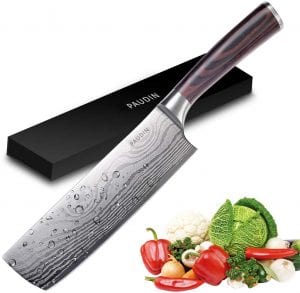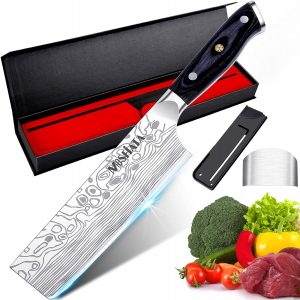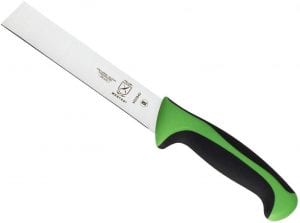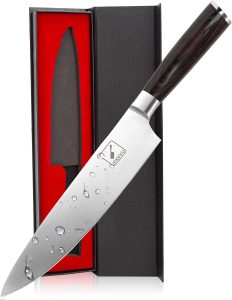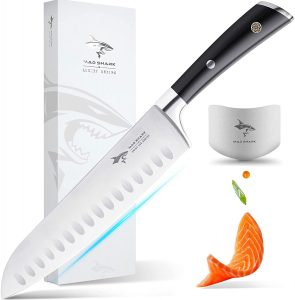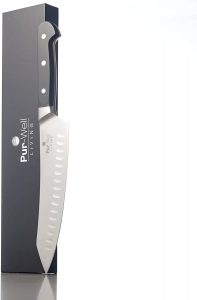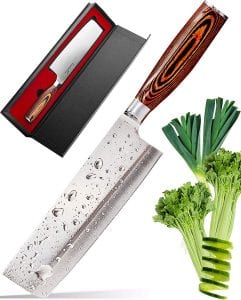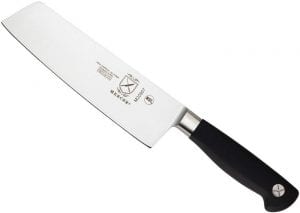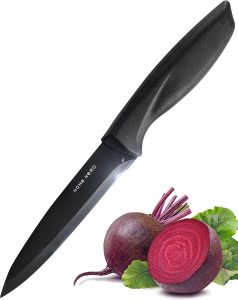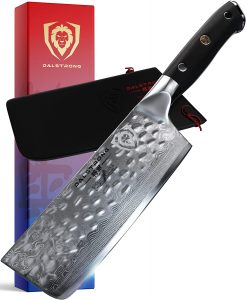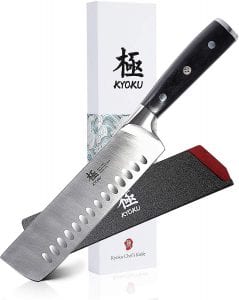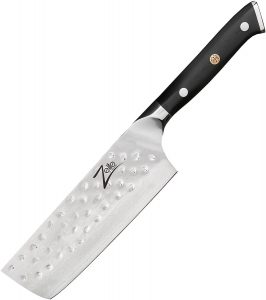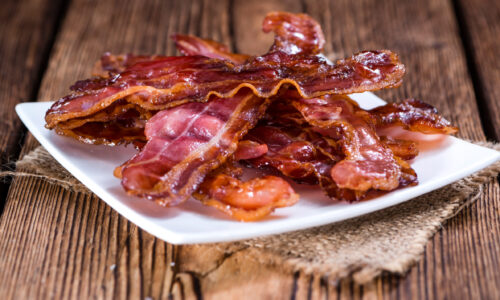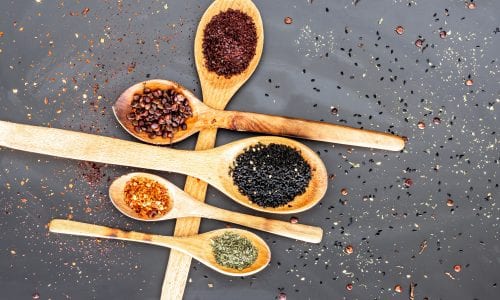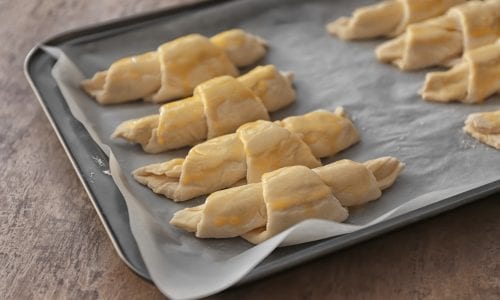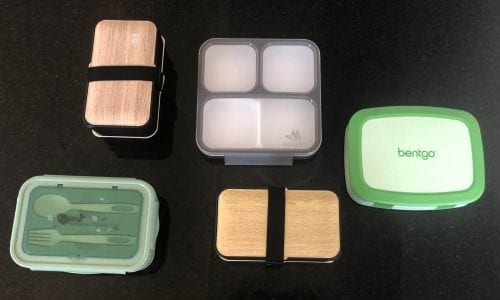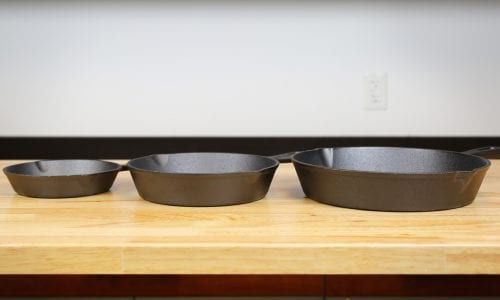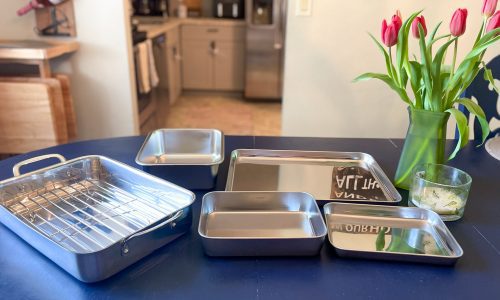The Best Vegetable Knife
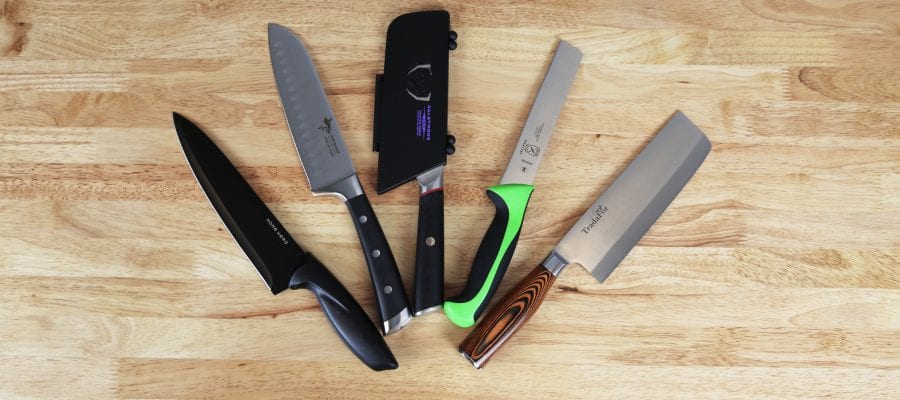
Our Review Process
Don't Waste Your Money is focused on helping you make the best purchasing decision. Our team of experts spends hundreds of hours analyzing, testing, and researching products so you don't have to. Learn more.
Our Picks For The Top Vegetable Knives
- 1. PAUDIN All-Purpose Pakkawood Handle Vegetable Knife, 7-Inch
- 2. MOSFiATA Multifunctional Angled Vegetable Knife, 7-Inch
- 3. Mercer Culinary Ergonomic Produce Vegetable Knife, 6-Inch
- 4. imarku Pakkawood Chef Vegetable Knife, 8-Inch
- 5. MAD SHARK Santoku Wipe Clean Vegetable Knife, 8-Inch
- 6. Pur-Well Living Food Prep Ergonomic Vegetable Knife, 8-Inch
- 7. TradaFor German Stainless Steel Vegetable Knife, 7-Inch
- 8. Mercer Culinary Nakiri High Carbon Steel Vegetable Knife, 7-Inch
- 9. Home Hero Chef Professional Vegetable Knife, 5-Inch
- 10. DALSTRONG Nakiri Engineered Vegetable Knife, 6-Inch
- 11. KYOKU Hollow Vegetable Nakiri Knife, 7-Inch
- 12. Zelite Infinity Tapered Nakiri Vegetable Chef Knife, 6-Inch
Not only does this vegetable knife stun with its pakkawood handle, but it also impresses with its German steel blade. The ergonomic handle provides a solid grip that remains comfortable, even when you've been doing an afternoon of food prep. Use the 7-inch blade to quickly slice tomatoes, dice onions or mince garlic.
Elegant Gift BoxThis vegetable knife is sold in a sleek black gift box, making it an excellent housewarming gift.
The first thing you'll notice about this top-notch vegetable knife is the attractive gift box it arrives in. This makes it an excellent choice as a housewarming, birthday or Christmas gift. Next, you'll be impressed by the super sharp German stainless steel that also happens to be hand-polished.
Rust and Corrosion ResistantThis vegetable knife measures 7 inches and weighs just 8.8 ounces.
This vegetable knife is a durable option, made out of one piece of high-carbon Japanese steel. The santoprene and polypropylene handle offers both comfort and durability. There are textured finger points on the handle to prevent slipping.
High-Quality SteelThis vegetable knife is made out of durable Japanese steel.
Thanks to the ergonomically designed handle on this vegetable knife, users will enjoy both comfort and control when preparing produce. The blade is made from a high-carbon stainless steel, so sharpness isn't an issue. With this knife, you also receive an attractive storage box, which makes it ideal for gift giving.
Comfortable to HoldThis well balanced vegetable knife is both stain and corrosion resistant.
Buying Guide
Chopping vegetables is one of the most basic culinary skills every home cook and professional chef needs to know. It doesn’t matter if you’re working in a restaurant or cutting up carrot sticks for your kids, a good vegetable knife can make all the difference. Have you ever chopped an onion and had all of the slices stick directly to the knife after chopping? Or have you chopped a watery vegetable like cucumbers and felt the knife slip while slicing? With a high-quality vegetable knife, you can chop any kind of vegetable with ease, all while having exact control of the blade.
“Each different type of knife was designed to perform certain functions,” says our resident culinary expert Julie Chernoff, dining editor for Better magazine and long-time member of Les Dames d’Escoffier. “What knives you need in your kitchen wholly depends on your style of cooking, what you make regularly, and what level of experience you have.”
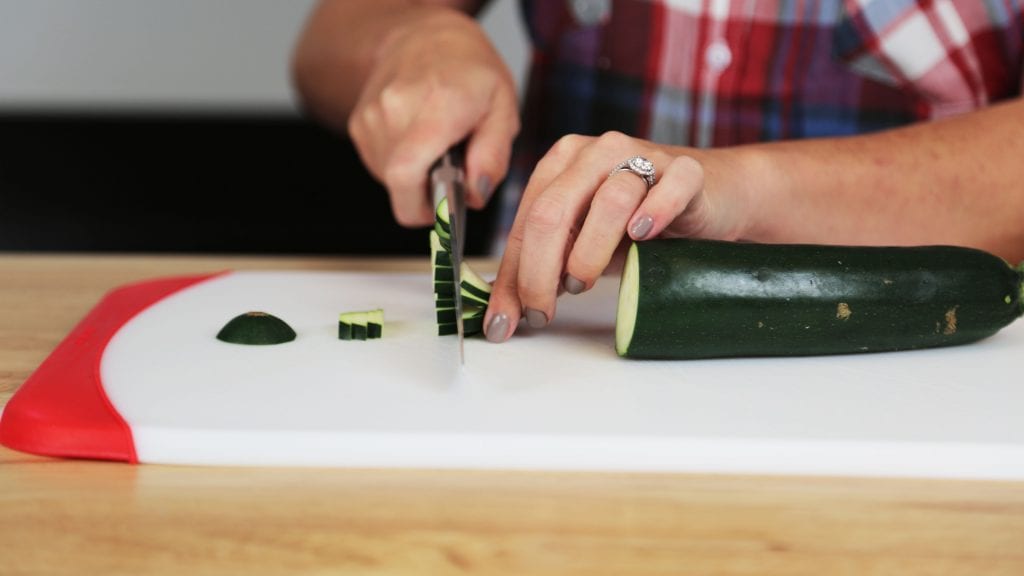
Many vegetable knives, such as the santoku or nakiri style knives, have a straight edge. These differ from traditional chef’s knives, which are found in almost every kitchen. A chef’s knife, which can also be used to chop vegetables, has a rocking curvature style blade. This means that when making cuts, the chef does not need to lift the knife fully off the cutting board. They can simply rock the blade back and forth while keeping it on the board. On the other hand, the straight edge of many vegetable knives means that it’s easier to make slices when the knife is lifted off the board for each cut.
“The blade is rectangular and flat, which helps you make super-thin, consistent slices, and is particularly suited for julienning veggies and herbs,” says Chernoff. “Given its straight edge, the vegetable knife is not meant to replace the rocking motion of the chef’s knife. You can chop fluidly with the vegetable knife without rocking. It’s known for making clean cuts, and won’t damage or smoosh the veggies.”
A good vegetable knife has a very fine edge, and the blade is wide all the way to the tip. This rectangular blade shape, unlike a traditional pointed blade shape, enables cooks to make extremely precise and straight cuts, slices and fine chops. The blade can also be used for mincing vegetables and herbs. For home cooks and chefs who want uniform cuts and perfect slices, a straight-edge style vegetable knife provides a clean and even presentation. A wide blade can also be used to scoop up the vegetables once cut and transfer them to a pan from the chopping board.
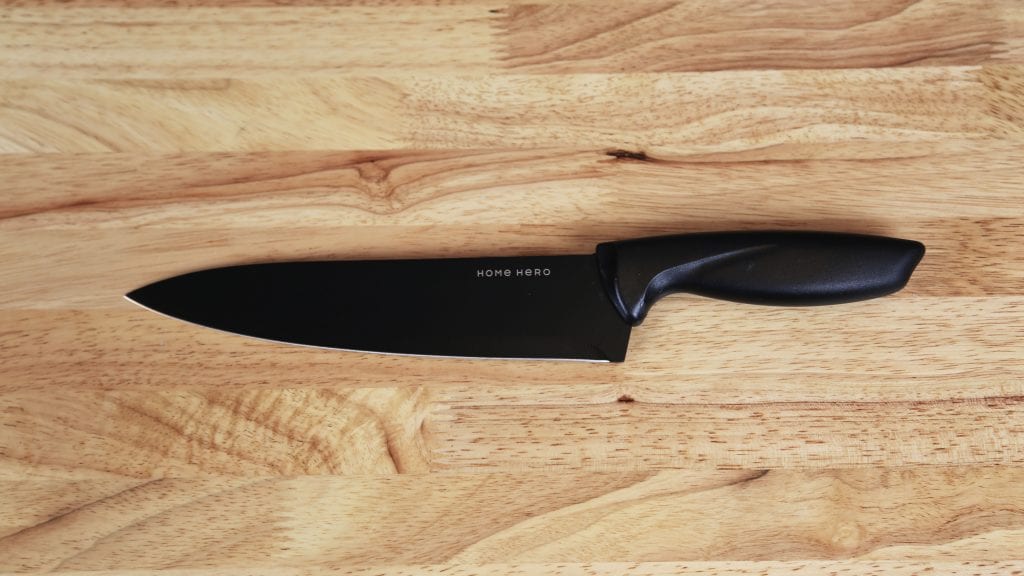
The traditional size for a vegetable knife is seven inches, though smaller knives at six inches are also available. The size of the knife determines what kind of vegetables it can cut, in addition to how much control the chef has over the blade. Often, vegetable knife blades have a hammered finish. This roughness reduces the amount of food that gets stuck to the knife after chopping.
Our Expert Consultant

Culinary Expert
Julie Chernoff is a long-time member of Les Dames d’Escoffier (past president of the Chicago Chapter, and current co-chair of the LDEI Legacy Awards Committee), the Association of Food Journalists (AFJ) and the International Association of Culinary Professionals.
Chernoff is the dining editor of Better, a lifestyle website and print magazine. Her journalism started in the test kitchens of Weight Watchers Magazine. She holds a BA in English from Yale University and is a graduate of the California Culinary Academy. She has spent the last few decades styling, photographing, teaching, developing recipes, editing, thinking and writing about food.
What to Look For
- When selecting which vegetable knife to buy, begin by looking at the blade. It’s important to know what kind of material the blade is made out of, how long it is and what its unique design features are. It’s important that the blade is designed specifically for slicing a wide variety of vegetables. Look for a knife that has a six-inch blade, made out of high-quality Japanese steel. The sharp edge is akin to a scalpel, making slicing easy. One model offers seven inches of high-carbon German steel. The blade features oval-shaped hallow divots, which minimize the suction of stuck-on food. It also enables chefs to slice faster and cleaner as compared to other knives. Other knives are made out of German high-carbon steel. They feature a straight edge with a single bevel, so they’re sharp enough to cut through delicate vegetables without any tearing or damage. The Mercer Culinary Produce Knife is six inches long, and made out of high-quality Japanese steel.
- When you’re working with such a sharp blade, it’s important to have exact control and maneuverability. This way, you can avoid slicing your fingers and knuckles. That’s why it’s important to review what kind of handle the knife has. Look for handles that offer comfort, but with a strong grip. You don’t want to have the knife slip away from you while slicing. Look for a knife handle that is made out of military-grade material, so it has life-long durability. The handle should also be ergonomic and shaped to allow superior control and agility. One option has a handle that is secured by the triple-rivet design. The ergonomic shape enables ease of movement. The Mercer Culinary Produce Knife’s handle is made out of a combination of santoprene and polypropylene. This ensures that it’s both comfortable and durable.
- Whether you’re a home cook or a professional chef, affordability may be a determining purchasing factor. If you’re just dabbling in the kitchen, you may not want to spend too much on a vegetable knife. However, if you’re a pro who is improving their knife skills, then a professional-grade vegetable knife might be right for you. In terms of affordability, the Mercer Culinary Produce Knife is on the lower end of the price spectrum.
More to Explore
When investing in a good vegetable knife, it’s important to maintain it well so that it lasts a long time. While knives are made with durability in mind, the way you sharpen and use it in the kitchen can affect the longevity of your knife.
If you’re looking to make exact and straight cuts with your vegetable knife, you need to ensure it stays sharp. Use a honing rod to sharpen your vegetable knife. The job of the honing rod is to realign the metal in the blade of the knife, smoothing out any nicks, indentations and flat spots.
In order to ensure your knife stays sharp, you have to cut your vegetable on the right kind of surface. Many people who have granite countertops in their kitchen cut their vegetables directly on the counter. However, the granite can actually harm your vegetable knives. Plus, there is a lot of bacteria on your kitchen surfaces, so it’s best to use a cutting board that is easy to clean with hot, soapy water.
The kind of cutting board you use can also affect the sharpness of your vegetable knife. Most cutting boards are either plastic or wood. Plastic cutting boards don’t harm your knives as a wooden cutting board does. However, the grooves and indentations that get made in a plastic cutting board after lots of use can hold germs and bacteria. It’s best to frequently replace your plastic cutting board or ensure it is clean before chopping vegetables. Your knife may dull with use on a wooden cutting board because of its hard surface. However, wooden cutting boards are much easier to clean and sanitize than plastic.

